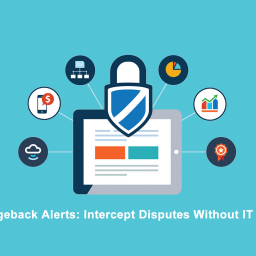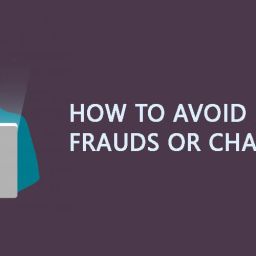
Chargebacks are an inevitable challenge for U.S. e-commerce retailers, often arising from customer disputes, fraud, or dissatisfaction with products and services. Effectively resolving chargebacks in online retail is crucial not only for maintaining financial health but also for preserving customer relationships and brand reputation.
As the number of e-commerce transactions continues to soar, understanding the intricacies of chargeback disputes becomes increasingly important for retailers seeking to safeguard their revenue. This blog post will explore best practices that e-commerce retailers can implement to streamline their chargeback dispute resolution processes.
By adopting proactive measures, leveraging technology, and fostering open communication with customers, retailers can mitigate the impact of e-commerce chargebacks and enhance their overall operational efficiency. Join us as we delve into strategies that can help businesses navigate the complex world of chargebacks, ensuring they stay competitive and resilient in a challenging marketplace.
Understanding the Chargeback Process and Its Implications
The chargeback process begins when a customer disputes a transaction, prompting their bank to initiate a reversal of the payment. This typically involves several stages, including the initial customer complaint, investigation by the issuing bank, and communication with the merchant’s acquiring bank. If the dispute is found to be valid, the funds are withdrawn from the merchant’s account and returned to the customer. This process not only affects immediate revenue but also incurs additional fees and penalties, impacting a retailer’s bottom line.
Understanding the reasons behind chargebacks—ranging from fraudulent activity and unauthorized transactions to customer dissatisfaction—allows retailers to address underlying issues effectively. Beyond the financial hit, chargebacks can also tarnish a retailer’s reputation, leading to reduced customer trust and loyalty. Furthermore, excessive chargebacks can result in higher processing fees and the risk of being classified as a high-risk merchant, which complicates future payment processing arrangements.
By familiarizing themselves with the intricacies of the chargeback process, e-commerce retailers can better prepare to respond promptly and accurately to disputes, thereby minimizing financial loss and preserving customer relations. Leveraging detailed transaction records and maintaining clear communication channels with both customers and payment processors are essential steps in mitigating these risks.
Some Related Blogs
- The Financial Impact of Chargebacks: How U.S. Companies Can Save with Strategic Solutions
- Top Chargeback Management Solutions for U.S. Merchants in 2024
- How Payment Authentication Mitigates Chargeback Risks
- How U.S. Enterprises Can Combat Chargeback Fraud with Advanced Payment Technologies
Common Causes of E-Commerce Chargebacks and How to Prevent Them
Chargebacks in e-commerce can arise from various causes, each requiring targeted prevention strategies. Fraudulent activity, including stolen credit card use, is a leading cause. Implementing robust fraud detection tools and requiring multi-factor authentication can help mitigate this risk.
Another common cause is customer dissatisfaction, often stemming from misleading product descriptions or unmet delivery expectations. Clear and accurate product information, along with reliable shipping and tracking services, can address these issues. Unauthorized transactions, sometimes due to family members making purchases without the account holder’s knowledge, can be minimized by offering easy-to-use account management and purchase notification features.
Additionally, technical errors such as duplicate charges or incorrect billing amounts can lead to chargebacks. Regularly auditing your payment processing system and ensuring it is up-to-date can prevent these mistakes. Poor customer service can also drive chargebacks when customers feel their complaints are not adequately addressed. Investing in a responsive and empathetic customer support team can resolve issues before they escalate to chargebacks.
Finally, ensuring compliance with industry standards and maintaining transparent return and refund policies can reduce disputes. By proactively addressing these common causes, e-commerce retailers can significantly reduce the frequency of chargebacks and enhance customer satisfaction.
Essential Documentation and Evidence for Disputing Chargebacks
When disputing chargebacks, having comprehensive and organized documentation is vital for building a compelling case. Key pieces of evidence include detailed transaction records, such as order confirmation emails, shipping and delivery receipts, and any correspondence with the customer. Transaction records should clearly outline the date, time, and amount of the transaction, as well as the payment method used.
![]()
Email us anytime!
Email customer service 24/7
![]()
Call us anytime!
Reach customer care 24/7 at +1 (888) 901-8653
Additional crucial evidence includes proof of delivery, especially if the delivery was confirmed by the customer through a signature or digital acknowledgment. High-quality images of the product or service delivered, along with tracking information that verifies the shipment route, can further strengthen your case.
For cases involving customer service disputes, maintaining records of all communications with the customer is essential. This can include email threads, chat transcripts, and notes from phone conversations that demonstrate efforts to resolve the customer’s issue.
For unauthorized transaction disputes, evidence may include security logs showing the use of authentication methods, such as IP addresses and time stamps, to verify that the legitimate account holder made the purchase.
Maintaining and organizing this documentation not only aids in effectively disputing chargebacks but also demonstrates your commitment to transparency and customer satisfaction.
Effective Communication Strategies with Payment Processors
Effective communication with payment processors is critical in resolving chargebacks efficiently. Establish a direct line of contact with a dedicated account representative who can provide personalized support and expedite the resolution process. Regularly review and discuss your chargeback ratio and trends with your payment processor to identify patterns and implement preventive measures.
Maintain clear and organized documentation to present a strong case when disputing chargebacks. Share this evidence promptly with your payment processor, ensuring all necessary details are included to avoid delays. Utilize any tools or dashboards provided by your payment processor to track dispute statuses in real time and respond to requests for additional information swiftly.
Stay updated on your payment processor’s policies and procedures related to chargebacks. Each processor may have unique requirements and deadlines, so familiarity with these specifics is crucial. Proactively seek feedback from your processor on ways to enhance your chargeback prevention strategies and stay compliant with industry standards.
Fostering a collaborative relationship with your payment processor helps streamline the dispute resolution process and equips you with the insights needed to reduce future chargebacks, thereby protecting your business’s revenue and reputation.





